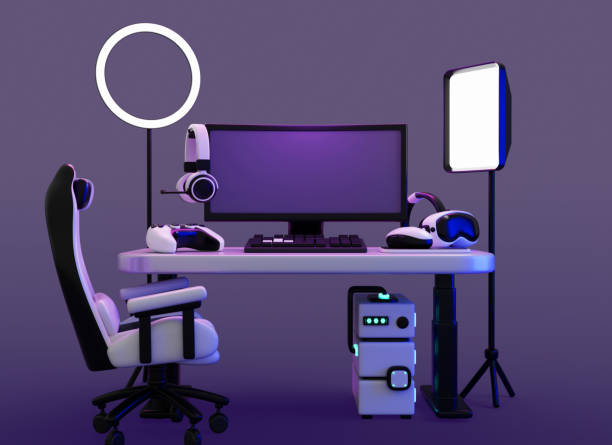If you’re wondering whether 1080p monitors are good for gaming, the short answer is: yes, they absolutely are. Despite the rise of 1440p and 4K displays, 1080p monitors remain a popular choice among gamers and office workers due to their affordability, performance, and widespread compatibility.
In this in-depth guide, we’ll break down everything you need to know about gaming on a 1080p monitor, and help you decide if it’s the right fit for your setup. Make sure to read tech related reviews from a trusted companies before purchasing anything.
Why 1080p Is Still Relevant in 2025
Although new display technologies like 1440p (Quad HD) and 4K (Ultra HD) are gaining popularity, 1080p (Full HD) remains highly relevant for several reasons:
- Affordability: 1080p monitors cost significantly less than higher-resolution ones. This makes them ideal for gamers on a budget or anyone looking to set up multiple screens without spending too much.
- Performance Efficiency: Because 1080p requires less graphical processing power than 1440p or 4K, your system can maintain higher frame rates—especially important for fast-paced games.
- Hardware Compatibility: Many mainstream graphics cards and gaming consoles (like the PS5 or Xbox Series S) are optimized for 1080p. Even budget or older systems can easily handle this resolution.
- Competitive Advantage: In eSports and competitive gaming, speed matters more than stunning visuals. 1080p monitors often support higher refresh rates (like 144Hz or 240Hz) and lower input lag, giving players a responsive edge.
Key Benefits of Gaming on a 1080p Monitor
1. Higher Frame Rates
A lower resolution means your GPU can process frames faster. Monitors supporting 120Hz to 240Hz refresh rates are more accessible at 1080p, enabling:
- Smoother animations and transitions
- Reduced motion blur
- Competitive responsiveness for twitch-based games
2. Lower System Requirements
1080p monitors allow gamers to enjoy modern titles without needing the latest graphics hardware. Benefits include:
- Less expensive PC builds
- Greater longevity from mid-tier GPUs
- Better performance on older or integrated graphics systems
3. Cost-Effective Upgrades
Because Full HD monitors are so common, manufacturers offer many advanced features at lower prices, such as:
- High refresh rates (120Hz, 144Hz)
- Low response times (1ms)
- Adaptive sync tech (like NVIDIA G-SYNC or AMD FreeSync)
When 1080p Might Not Be Enough
Despite its strengths, 1080p may fall short if:
- You want ultra-realistic visuals and cinematic detail in games like Cyberpunk 2077 or Horizon Forbidden West
- You have high-end GPUs like the RTX 4080 or RX 7900 XTX and want to utilize their full power
- You do professional work involving image, video, or design, which benefits from more screen real estate and pixel density
Real-World Examples
- eSports Pros: Most professional gamers prioritize high refresh rates and minimal input lag. For example, CS:GO pros often choose 1080p 240Hz monitors for peak performance and consistency.
- Budget Builds: A common and effective pairing is a GTX 1660 Super with a 1080p 144Hz monitor. This combination handles games like Apex Legends and Call of Duty: Warzone smoothly, keeping overall system costs under $800.
Who Should Use a 1080p Monitor?
Ideal users include:
- Casual Gamers: Looking for solid gaming performance without high costs.
- Competitive Players: Who want speed and responsiveness more than visual fidelity.
- Dual-Purpose Users: Office workers who also game and need a general-purpose display.
How to Choose the Best 1080p Monitor
Key features to prioritize:
- Refresh Rate: Go for at least 120Hz; 144Hz is ideal.
- Response Time: Aim for 1ms to minimize lag and ghosting.
- Panel Type:
- TN: Fast, but limited color accuracy and viewing angles.
- IPS: Great for colors and angles, slightly slower.
- VA: Best for contrast, but may have slower response times.
- TN: Fast, but limited color accuracy and viewing angles.
- Sync Technology: G-SYNC (NVIDIA) or FreeSync (AMD) helps reduce tearing and stuttering during gameplay.
Visual Suggestions
To make this section even more engaging and easier to digest, visuals such as:
- Frame rate comparison charts (1080p vs 1440p vs 4K)
- Illustrated breakdown of monitor features (refresh rate, response time, sync tech)
- Game scene screenshots at each resolution to show visual differences
Conclusion: Is a 1080p Monitor Right for You?
In 2025, 1080p monitors still hold strong as an excellent choice for gamers who value performance, affordability, and flexibility. Whether you’re an eSports enthusiast, a weekend warrior, or someone who just likes to unwind with a good game after work, 1080p provides a balanced experience.



